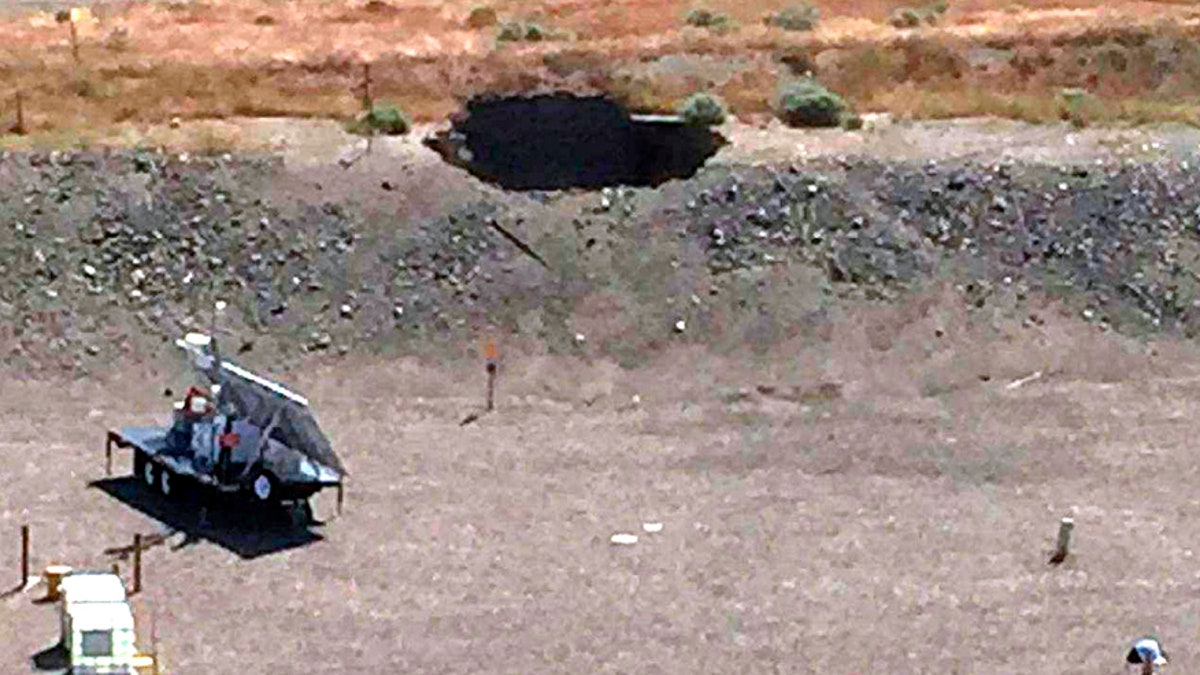
This image provided by the U.S. Department of Energy shows a 20-foot by 20-foot hole in the roof of a storage tunnel at the Hanford Nuclear Reservation near Richland, Wash. (AP/US Department of Energy)
A hole that was discovered this week on top of a nuclear waste storage tunnel has been plugged with dirt, ending an emergency situation at the Hanford Nuclear Reservation, U.S. Secretary of Energy Rick Perry said Thursday.
The hole was discovered Tuesday at the former nuclear weapons production complex, prompting the evacuation of some workers and thousands of others to shelter-in-place for a few hours.
Perry announced that the 400-square foot partial collapse of the tunnel roof had been filled by 53 truckloads of dirt delivered by workers in protective gear at the highly radioactive site.
"This was accomplished swiftly and safely to help prevent any further complications," Perry said in a press release. "Our next step is to identify and implement longer-term measures to further reduce risks."
The Energy Department has said no workers were injured in the incident and no radiation was released to the environment.
The state of emergency ended shortly before midnight, and most of the 9,000 workers at the site were told to report to work as usual on Thursday.
However, access to the area where the tunnel roof collapsed will continue to be restricted, the agency said.
Hanford for decades made plutonium for nuclear weapons and the site in southcentral Washington state is now engaged in cleaning up the nation's largest collection of radioactive waste. That work is expected to take until 2060 and cost an additional $100 billion over the $19 billion already spent.
The collapse of the aging tunnel at the nuclear weapons production site underscored what critics have long been saying: The toxic remnants of the Cold War are being stored in haphazard and unsafe conditions, and time is running out to deal with the problem.
Thousands of workers at Hanford were told to stay home Wednesday as efforts began to plug the sinkhole in the earth over the unoccupied storage tunnel.
The cause of the collapse was not immediately known.
The rail tunnel was built in 1956 out of timber, concrete and steel, topped by 8 feet of dirt. It was 360 feet long. Radioactive materials were brought into the tunnel by railcars. The tunnel was sealed in 1965 with eight loaded flatbed cars inside.
Hanford, a 500-square-mile expanse in remote interior Washington about 200 miles from Seattle, was created during World War II as part of the Manhattan Project to build the atomic bomb.
Hanford made most of the plutonium for the nation's nuclear weapons, including the bomb dropped on Nagasaki, Japan, during the war. It now contains the nation's greatest volume of radioactive waste left over from the production of weapons plutonium.

